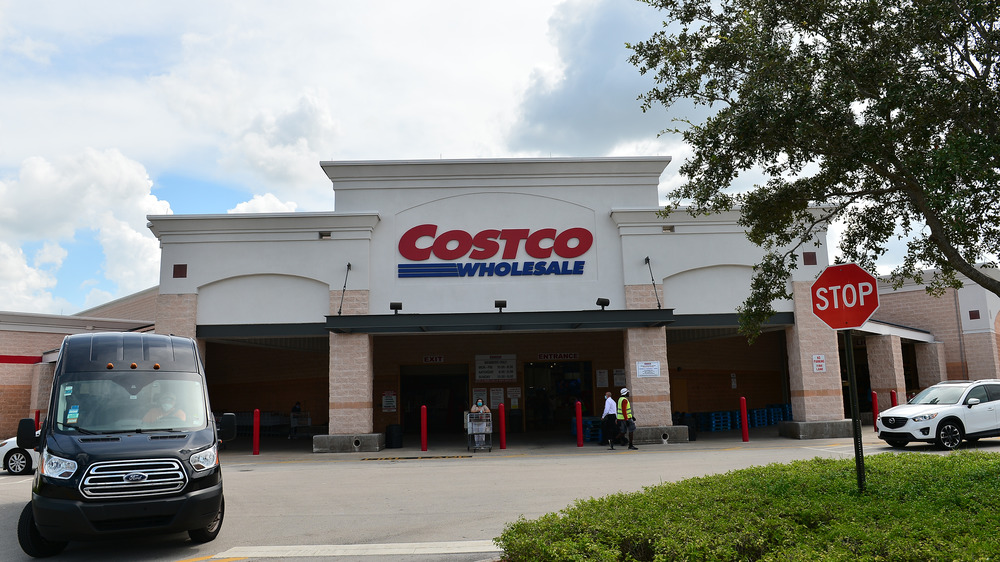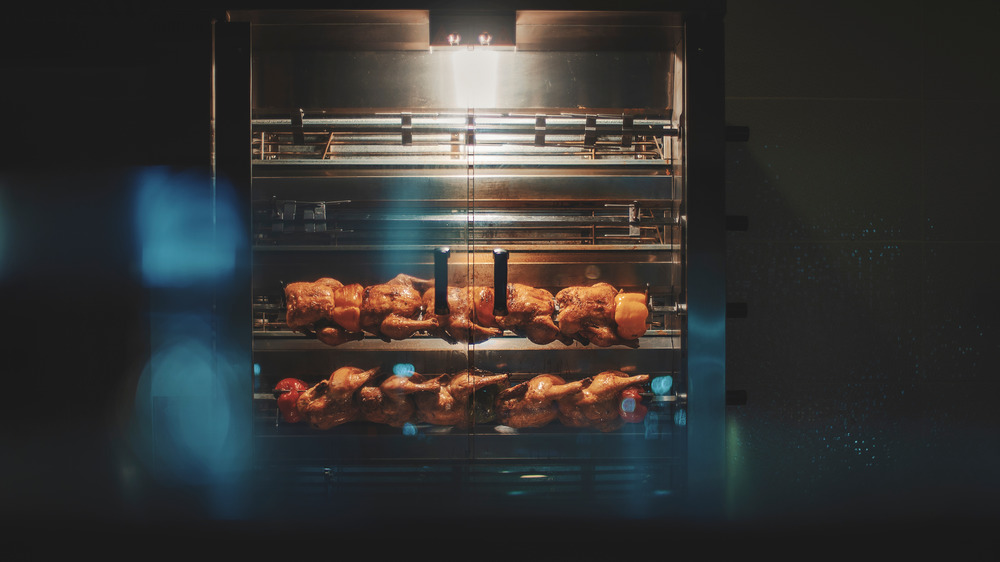The Ridiculous Number Of Rotisserie Chickens Costco Sells Every Year
Each year, Costco sells millions upon millions of rotisserie chickens. NPR simply says that the average number of chickens sold annually is about 60 million, but considering the numbers recent years have seen, this may be an underestimate. The Wall Street Journal reported in 2018 that the number of rotisserie chickens that Costco sold in the 2017 fiscal year had increased from 2010's 51 million to 87 million. According to The Motley Fool, 2018 topped all of them with 91 million birds bought.
However, as The Motley Fool continues, Costco also lost $30 million to $40 million in 2015 on these fast-selling fowls. This is because Costco insists on keeping the price of the rotisserie chicken at $4.99 and has done so, according to CNN, since 2009, even when competitors like Walmart raised the price of their chicken by a dollar. Costco, wrote CNN, was willing to take losses "$30 million, $40 million a year on gross margin by keeping it at $4.99," according to Costco Chief Financial Officer Richard Galanti, speaking in 2015.
In fact, Costco is willing to go even further than simply keeping the price down. In 2019, another CNN report detailed Costco's plans to spend $450 million on a chicken supply factory in Nebraska. "We were having trouble getting the size bird we wanted on a consistent basis," Jeff Lyons, senior vice president of fresh foods at Costco, explained. If the birds were too big, they wouldn't fit on the rotisserie. These chickens are Costco's obsession.
Losing to win
All of this may strike some as excessive efforts to keep the cost of a chicken down. However, Ayn-Monique Klahre explains in The Kitchn that one time they went to Costco to buy a $4.99 chicken, but paid $185 at the checkout. After this revelation, a list follows of the 12 different items they included in the checkout because they happened to pass them.
Klahre's experience is a textbook example of the loss leader strategy. Culinary Lore describes a loss leader as a product that costs less than the store paid to acquire it, but is essential enough for customers to enter the store and perhaps succumb to the temptation to buy other things. One example they give are the various turkey discounts that stores offer around Thanksgiving. The reasoning is that customers who have saved on the expensive centerpiece of the meal will then purchase all the ingredients needed to supplement the turkey, for which the stores charge double. Investopedia includes Costco's hot-dog-and-soda combo and its gasoline, along with the rotisserie chickens, as examples of the warehouse stores' loss leader items.
This, obviously, presents a risk of shoppers resisting temptation and only buying the cheap options, thus causing the store to lose money without making up the difference with other goods. However, the bet is that if you do go to Costco to add to the ridiculous amount of chicken sold each year, you are rather unlikely to be a person who regularly swoops in to foil Costco's plan.

